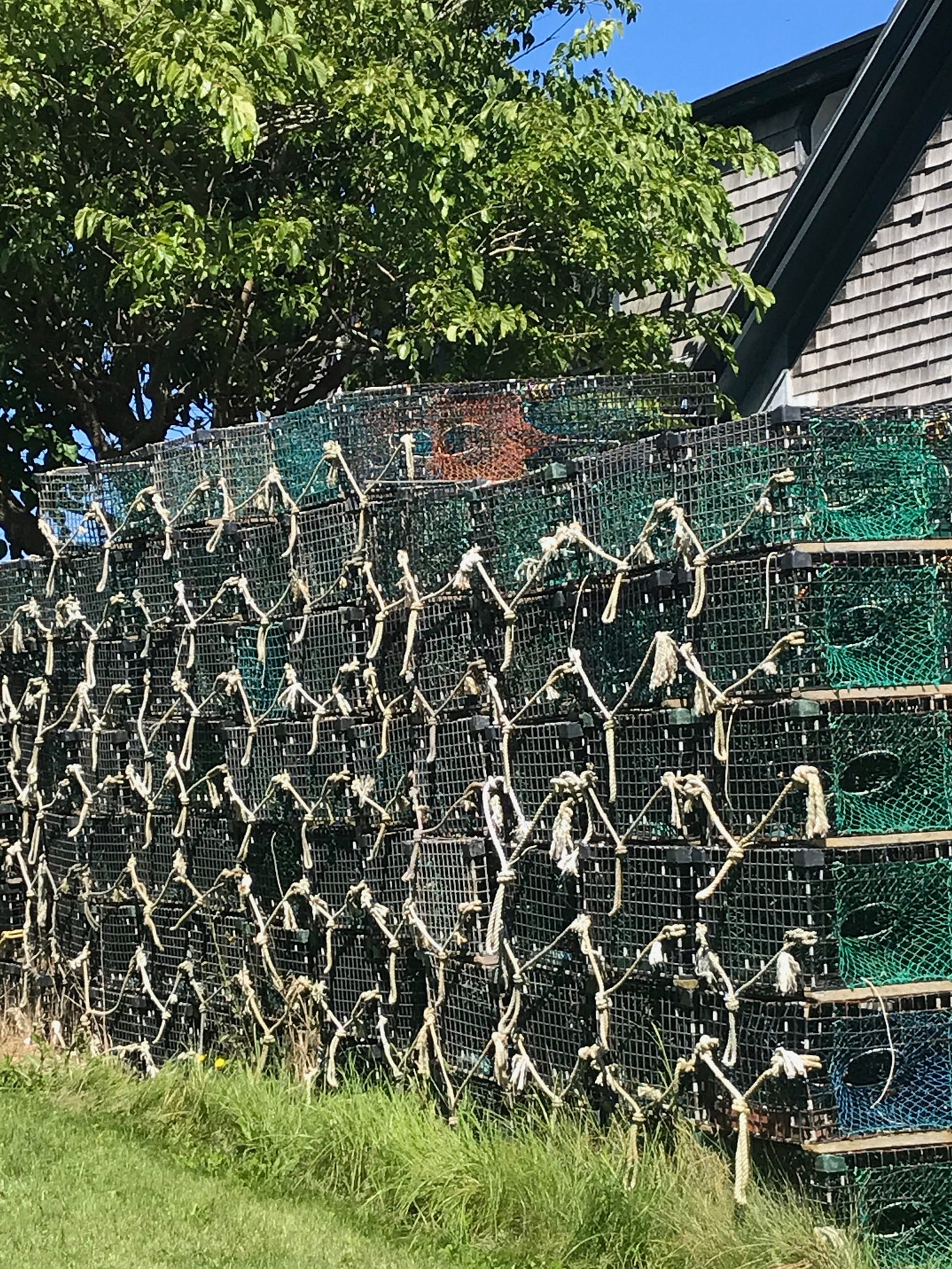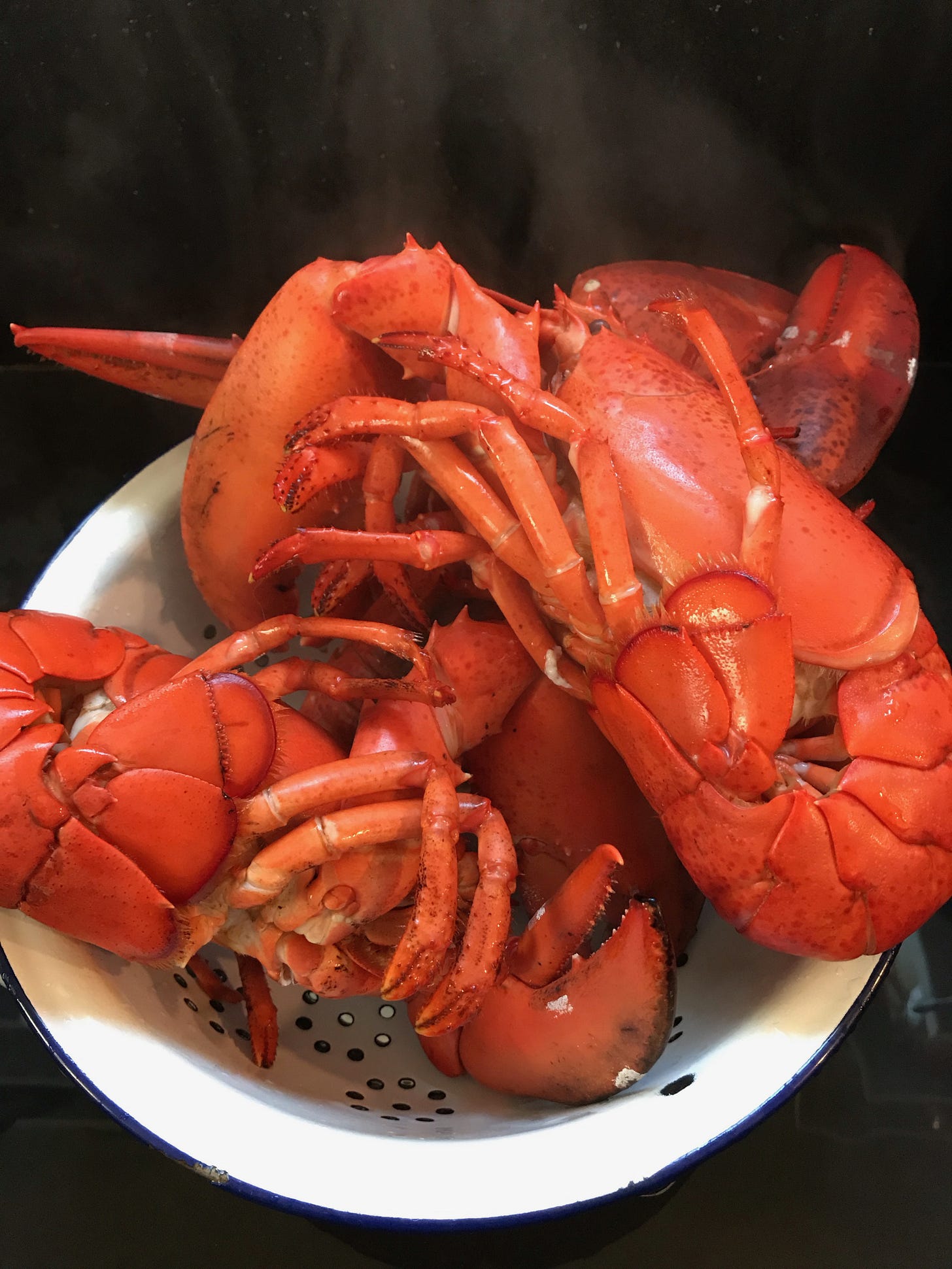The powers that be in our nation’s health patrols (aka USDA, FHA, NIH) recommend that Americans consume at least eight ounms) of seafood every week. We have a long way to go to reach that goal. Right now, the figure is almost 20 pounds per person annually, which works out to a hair over six ounces weekly, and when you realize that a great number of Americans don’t eat any fish at all of any kind, including canned tuna, that’s pretty pathetic. On the other hand, when I first started writing about fish and seafood, back in the 1980’s, the annual per capita was just 14 pounds, so there’s been some improvement. See this report from the National Institutes of Health: https://tinyurl.com/22d5tp2n.
But those who read my diatribe last week in favor of farmed fish know that I am not alone in wondering where all that fish to keep us healthy is supposed to come from. Around the world and without exception, the oceans are ranked as fully exploited or over-exploited, meaning we’re getting close to the point where there’ll be no more wild catch for the taking. My money is emphatically on aquaculture, farming fish and other types of seafood, to provide us with a safe, nutritious, sustainable, and environmentally healthy source. That means farmed oysters, clams, mussels, Arctic char, carp, catfish, tilapia, trout, seabass (aka branzino), gilthead bream, yellowtail (aka amberjack or seriola), salmon, shrimp, and on and on as researchers, like those at the University of Maine’s Aquaculture Research Institute, constantly work to identify new species that adapt well to being raised in controlled environments.
You might be surprised to learn that I, along with a few others, consider lobster, Maine lobster, to be a farmed species, or rather, like Maine wild blueberries, a wild product that is cultivated and controlled by the harvesters. Lobsters in Maine, I’ve been told, actually thrive on the bait provided in lobster traps; they enter and exit almost at their leisure, indulging in the feed provided by the fishermen—until that unhappy moment when their presence in the trap coincides with the fisherman’s haul, and out they go and into the cooking pot.
Speaking of cooking pots of course reminds me that the biggest problem for seafood consumers is often how to prepare the stuff. And that’s where Americans, for the most part, fail as a culinary culture, whether we’re talking about wild fish or farmed. Nearly two-thirds of fish consumption in the U.S., according to statistics provided by that same NIH report, takes place in restaurants. The rest of it involves such non-culinary activities as opening a can of tuna or slinging a tray of fish fingers into the microwave.
Clearly, as cooks, we are just plain scared of fish.
That doesn’t have to be. That shouldn’t be. There are lots of ways to prepare all the different kinds of seafood that are simple, easy, and delicious—no brainers, as my offspring would say.
WHERE TO GO FISHING?
You have to begin, however, with a first-rate fish monger, and that might be the most difficult part of the preparation. Here in Maine, I’m fortunate to count on two really fine shops that deal in seafood and nothing but seafood—Jess’s Market
in the South End of Rockland and, farther away, Harbor Fish down on the docks in Portland. Both of these institutions (and they are that) will do some shipping but it’s only fair to say that shipping fresh seafood is very expensive for obvious reasons.
In other parts of the country, you’ll have to rely on local guides. Citarella, with many locations in New York City and its surroundings, is the place I favored back when I lived in the city. In Boston, or rather Cambridge, I bought many a fine kettle of fish at New Deal Fish Market, on Cambridge Street, a shop that traces its roots back three generations to the fishing port of Gaeta, south of Rome.
But wherever you live in this world, it’s your job to get out there and find the best and most informed source. Start with your local newspaper’s food reporters—they still do exist--or ask in a favorite restaurant that does a good job with seafood. Many supermarkets have at best indifferent seafood sections, but the finest chains, like Wegman’s in the east and Central Market in Texas, just to mention two, boast excellent seafood departments. And of course if you’re on the West Coast you have several choices, although fish mongers in the PNW mostly seem schooled to ignore farmed seafood.
So how do you know that the fish on display is any good? Appearance is one clue—fish should look fresh, with flesh that is moist, the segments clinging together.“Gaping” is the word fish folks use to describe old fish: the segments have pulled apart slightly in the process of aging, looking a bit like shingles on an old house. Smell, of course, is an absolute give-away. A briny smell, like the edge of the beach in the early morning, is what you’re sniffing for—and most definitely not anything that has an off-putting, fishy aroma.
MAINE TRICK RIDS KITCHEN OF UNDESIRABLE ODORS
Now that you have your fish, it’s time to cook. The complaint I hear over and again from people who refuse to cook seafood at home is this: It makes the whole kitchen smell of fish. To me, this reason has no merit. When I roast chicken, the kitchen smells of chicken and when I make pizza the kitchen smells of oregano and tomatoes and garlic and other delights. Cooking produces fragrance and if you don’t like the aromas of cooked food, well, it’s likely you’re not reading this column anyway. But to help you cope, I offer this tip, which I learned from an elderly Maine housewife many years ago: scattering a teaspoon full of ground or powdered cloves across a hot, dry skillet or, if you have an electric stove, straight onto the electric coils, produces a puff of smoke, a glitter of tiny stars, and a seductive incense that drives away any undesirable odors, including those of boiled cabbage. Try it and see.
Keep reading with a 7-day free trial
Subscribe to On the Kitchen Porch to keep reading this post and get 7 days of free access to the full post archives.







